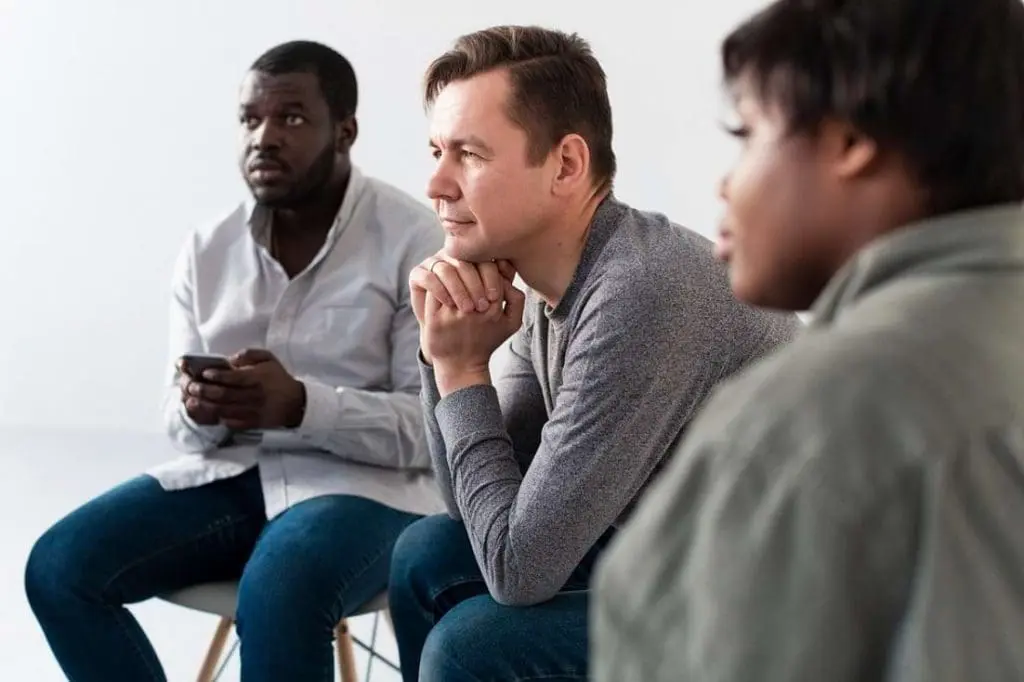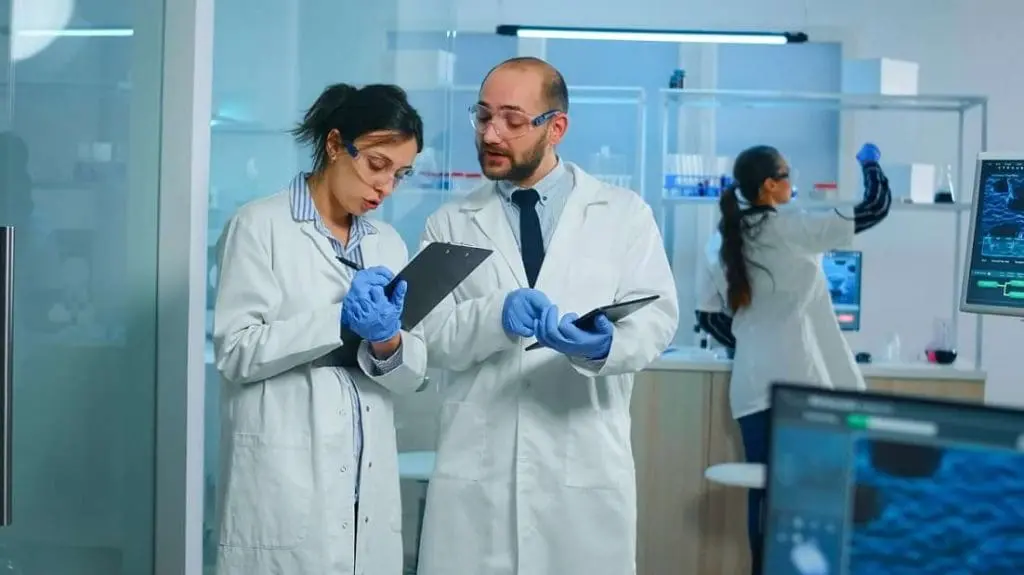Hair follicle testing is used by employers to screen job candidates and employees for drug use.
First pioneered by (and named after) the Schneider national transportation and logistics company, the Schneider hair follicle test can mean the difference between landing a job and losing it—and even life and death.
How far back can the Schneider hair follicle test detect drug use? The surprising answer is up to 90 days.
In this blog, we explore what the Schneider hair follicle test is, what drugs it screens for, how far back drug use can be detected, the controversy surrounding the test, and misconceptions and myths about hair follicle drug testing.
Table of Contents
The Science Behind Hair Follicle Testing

Hair follicle drug screening is far more reliable than any other form of drug testing, including urine and blood sample analysis. That’s because drugs and drug metabolites remain in the hair as it grows. Metabolized drugs even attach to melanin – which gives hair its color. As the hair grows beyond the follicle, a hair sample can be collected and sent to a lab for analysis.
Understanding Hair Follicle Testing
Hair follicle testing was first discovered in 1979 and came into practice as a commercial means to detect drug abuse in 1986.
The test became synonymous with the Schneider company in 2007 when the company’s safety leader, Don Osterberg, read a survey showing that 10% of truck drivers admitted to using drugs.
When Osterberg realized that DOT urine tests weren’t catching all drug use, he began looking for an alternative and found it in hair follicle drug testing. Schneider added hair testing to its driver pre-hire screening process in March 2008.
Hair follicle drug screening has had a dramatic impact on the accuracy of Schneider’s drug screening methods. Between the date when the company began testing hair samples for drug abuse and April 2012, approximately 100 drivers failed its urine test. However, 1,300 had positive hair follicle tests.
A separate study by the University of Central Arkansas found that 300,000 drivers in the U.S. would be removed from employment if they were required to undergo a hair follicle drug screening.
The Timeline of Hair Follicle Testing
While a urine test typically has a detection time frame of 2-5 days, a hair follicle test can detect drug use as far back as 90 days. For this reason, it is considered a more reliable indicator of drug use than urine testing. Hair follicle tests are also more tamper-proof and tend to hold up more often in court.
The science of hair follicle testing is simple. When a drug is consumed it is broken down into a metabolite substance that enters the root of the hair through the hair follicle and glands on the scalp. The drug and its metabolites then remain in the hair as it grows. Some drugs also attach to the melanin pigment which gives hair its color, and can remain in the hair for weeks or months.
Because hair grows at a rate of 0.5 inches per month, a half inch of hair can be screened to detect approximately 30 days of drug use, including the drug type and quantity. A 1.5-inch sample of 200 strands of hair is often all that is needed to detect a 90-day window of drug use.
Hair follicle sample results are delivered within the same window as urine test results (2-3 business days).
Although very reliable and used by firms across multiple industries, ideally employers should use both urine and hair follicle testing, since hair testing doesn’t catch recent drug use.
Schneider’s Approach to Hair Follicle Testing

Schneider is a fierce advocate for hair follicle testing and requires it for pre-employment drug screening and routine employee drug testing.
Schneider’s Drug Testing Policy
Because of the test’s accuracy, reliability, and longer detection window, Schneider requires that new-hire candidates for most positions take a hair follicle test during the pre-employment orientation process. The tests are performed by a third-party testing provider.
The Schneider hair follicle test looks for the presence of the following drugs or their metabolites:
- Amphetamines (including methamphetamine)
- Marijuana and cannabinoids (THC)
- Cocaine
- Opiates (heroin, morphine, and codeine)
- Phencyclidine (PCP)
- Barbiturates
- Benzodiazepines
- Methadone
Furthermore, Schneider tests commercial motor vehicle (CMV) drivers for drug use using both the hair follicle test and the DOT-mandated urine test. Random urine tests are also conducted once employed.
The consequences of failing any hair follicle drug test include a job offer being rescinded, or depending on the employment agreement, the employee being fired or suspended.
How Far Does Back Can Schneider’s Hair Follicle Test Detect Drug Use?
The Schneider test goes back 90 days. However, drug use in recent days (up to seven) will not be detected since only hair strands above the scalp are tested and not the actual hair follicle. To detect recent drug use, Schneider also performs a urine test.
Schneider Hair Follicle Test: The Real-Life Impact and Controversies

Hair follicle drug testing has not been without its share of controversy, including claims of racial discrimination in hiring practices, unsuccessful attempts to mandate reporting of hair follicle drug test results to the Federal Motor Carrier Safety Administration (FMCSA), and more.
Case Studies and Legal Precedents
Despite lobbying from trucking safety groups, hair follicle testing is not required under federal or DOT law. There are also restrictions on reporting the results of the test to the FMCSA.
Below is a timeline of recent developments:
- Hair follicle testing is not part of the DOT-mandated drug and alcohol testing program: Even though the hair follicle drug test is proven to be more accurate and reliable than urine testing for eliminating drug users from the CMV driver pool, in 2022, the FMCSA denied a request by The Alliance for Driver Safety & Security (or “Trucking Alliance”) to allow the use of hair follicle testing for determining a CMV driver’s drug use. Therefore, unlike the DOT urine drug test, the hair follicle test is not federally mandated as a required drug test for commercial drivers.
- Hair follicle drug test results can’t be shared via the FMCSA clearinghouse: Current law does not require employers to report job applicant or employee hair follicle drug testing results to the FMCSA’s federal Drug and Alcohol Clearinghouse (meaning it doesn’t count against the driver or stay on their record and those results can’t be accessed by any trucking company seeking screening information on applicants).
Although based on science, the hair follicle test has also been challenged by minority groups and the NAACP who assert the potential for certain hair types and colors to generate a higher rate of false positives,. However, studies claim to prove the contrary.
For example, in Boston, seven black police officers filed a lawsuit claiming they were wrongly fired or suspended when their hair tested positive for cocaine, yet follow-up tests for six of the officers came back negative. Several of the officers received over $1 million in compensation.
Religious groups, including the Sikh community, have also objected to the screening practice since maintaining uncut hair is a primary expression of their faith.
Addressing Misconceptions and Criticisms
There are many misconceptions and myths about follicle drug screening. For example, it’s a mistake to assume that shampooing will remove evidence of drug use; it likely will not. Shaving won’t make a difference either, as the testing provider will simply take hair from another area of the body.
Another misconception is that the test requires a sample of the hair follicle (pulled from the root). It only requires the hair to be trimmed capturing at least a 1.5-inch sample. Hair must also be fresh to be conclusive. For instance, a hair sample from a hairbrush could be contaminated or be from another person.
However, the Schneider hair follicle test is not foolproof, as lawsuits and studies prove. For example, when National Institutes of Health (NIH) scientists conducted a study into the influence of cosmetic hair treatments on drug detection, they found that the drug content of bleached or dyed hair decreased in comparison to untreated hair. All the individuals involved admitted to similar drug consumption. Individuals can also test positive if they’ve been in the presence of or in the same room as cocaine users.
The Schneider hair follicle test is controversial, but employers can address concerns and criticism by working with their DOT drug testing provider to give employees and job applicants information and resources about why they use the test, what’s involved, and steps individuals can take if they feel they have wrongly failed a hair follicle drug test.
How Far Back Can Schneider’s Hair Follicle Test Really Detect Drug Use: FAQ

-
FAQ 1: Does Schneider do a hair follicle test?
Yes, Schneider pioneered the use of hair follicle testing to screen employees and candidates for drugs.
However, hair follicle drug testing is not limited to the trucking industry. Many firms have embraced the test for workplace drug testing and pre-employment screening. -
FAQ 2: How far back can hair follicle testing detect drug use?
The Schneider test can detect drug use for up to 90 days. Although the test doesn’t reveal how often an individual used drugs during that time frame.
Recent drug use (typically in the week prior to the test) is not detected since only hair strands above the scalp are tested and not the actual hair follicle. To detect recent drug use, a company may also perform a urine test.
-
FAQ 3: What can interfere with a hair follicle test?
There is some dispute about what can interfere with a hair follicle test. Some say that shampooing can disguise the presence of drugs and drug metabolites in hair, but shampoos have little or no effect on test results. However, studies show that permanent hair color can interfere with testing samples.
One of the most common reasons for a false positive hair follicle drug test is the use of prescription drugs.
Hair follicle drug tests are proven to be highly accurate and reliable. However, to decrease the chances of a false positive, testing providers will select a fresh sample of hair (usually from the head).
-
FAQ #4: What does a hair follicle drug test screen for?
Hair follicle drug tests screen for illicit and prescription drugs in the system, including:
Amphetamines (including methamphetamine)
Marijuana and cannabinoids (THC)
Cocaine
Opiates (heroin, morphine, and codeine)
Phencyclidine (PCP)
Barbiturates
Benzodiazepines
Methadone
Unraveling the Truth: How Far Back Does Schneider’s Hair Follicle Test Really Detect Drug Use
The Schneider hair follicle drug test is an important tool in any company’s screening toolkit. It helps ensure the safety of employees and the public by keeping drug abusers out of the workplace – particularly those in safety-sensitive positions, like commercial vehicle drivers.
Although the Schneider trucking company pioneered the use of hair follicle drug testing in the workplace, the test has been increasingly adopted by other companies and industries. Despite the testing evidence, there are many concerns and misconceptions about these important tests that employers must address.
If you have questions or are looking to start or optimize your hair follicle drug testing program, contact us to learn more about how Acuity can help.
Learn more about Acuity Drug Testing Services.
